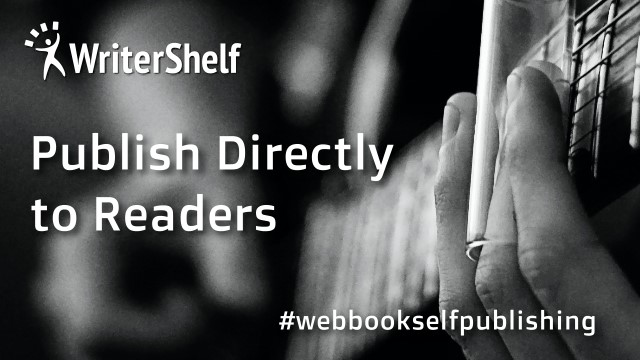Makeup for Photography: How Lighting Changes Everything in Studio and Daylight Shoots
8
0
·
2025/10/13
·
8 mins read
☕
WriterShelf™ is a unique multiple pen name blogging and forum platform. Protect relationships and your privacy. Take your writing in new directions. ** Join WriterShelf**
WriterShelf™ is an open writing platform. The views, information and opinions in this article are those of the author.
Article info
Categories:
⟩
⟩
⟩
⟩
Tags:
Total: 1762 words
Like
or Dislike
More to explore









Photography isn’t just about cameras and lenses — it’s about light. Light defines mood, color, and texture, and when it comes to makeup, it can completely change how a person looks in a photograph. What appears flawless in person might look shiny, flat, or uneven on camera, depending on whether you’re under bright studio lights or soft daylight.
That’s why understanding how lighting affects makeup is essential — not just for models or makeup artists but also for anyone planning event photography, corporate event photography, or even wedding photography.
Every photo session, from a professional headshot to a glamorous bridal portrait, is shaped by lighting. The way makeup interacts with studio light versus natural daylight can dramatically influence the outcome. Let’s break down how to make the right makeup choices for each lighting environment so that your photos always turn out stunning and true to you.
Understanding the Role of Lighting in Photography
Before we dive into makeup specifics, it’s crucial to understand why lighting matters so much in photography. Light defines depth, tone, and dimension. In photography, it acts like paint — shaping the subject’s face, adding highlights and shadows, and setting the emotional tone of the image.
Different lighting setups reveal different aspects of a person’s features. For example:
Studio lighting tends to be more controlled, directional, and intense. It emphasizes every contour and texture, including fine lines or uneven makeup.
Daylight, especially during the golden hour, is softer and more flattering, but it also changes constantly — from cool to warm tones depending on the time of day.
In both cases, the key is balance. The right makeup application complements the lighting, enhancing natural beauty rather than fighting against it.
Studio Lighting: Precision and Perfection
Studio lighting gives photographers complete control over how light hits the subject. It’s bright, consistent, and predictable — which is both a blessing and a challenge. Because it’s so revealing, it doesn’t forgive mistakes in makeup.
1. Foundation and Base Makeup
Under strong studio lights, heavy foundation or dewy finishes can cause unwanted shine. Instead, opt for:
Matte or semi-matte foundations that minimize reflection.
Translucent powder to set the makeup and control oil buildup.
Avoid foundations with SPF — the zinc oxide or titanium dioxide in them can cause a white cast under flash photography.
A smooth, even complexion is key because studio lights amplify texture. Use a primer that blurs pores and fine lines before applying foundation.
2. Contouring and Highlighting
In studio conditions, photographers often use multiple light sources — softboxes, beauty dishes, and reflectors — that flatten shadows. Without some contouring, your face can look flat or washed out.
Use a cool-toned contour to mimic natural shadows.
Apply highlights strategically on high points like cheekbones and brow bones, but avoid overdoing it. Too much shimmer can look oily under bright lights.
3. Eye Makeup
Studio light reveals every detail, so blending is everything.
Stick to matte or satin finishes for eyeshadows. Shimmery shades can cause light bounce and make the eyelids appear uneven.
Use black or dark brown eyeliner to define the lash line clearly.
False lashes should look natural — dramatic lashes can cast unwanted shadows on the face.
4. Lips
Under bright lights, color tends to appear lighter than it really is.
Choose a slightly deeper shade than your usual color.
Matte or creamy finishes work better than glossy ones since gloss can reflect light too harshly.
Daylight Photography: Soft, Natural, and Ever-Changing
Daylight, unlike studio lighting, changes throughout the day. Morning light is cool and blue-toned, midday light is bright and neutral, while golden-hour light adds warmth and depth. For outdoor wedding photography NYC or event photography, daylight often brings out the best in skin tones — but it also demands subtle adjustments in makeup.
1. Foundation for Daylight
Natural light is more forgiving but can still highlight uneven textures or mismatched tones.
Choose a lightweight, dewy foundation or even a tinted moisturizer.
Blend thoroughly into the neck and hairline to avoid visible lines.
If it’s an outdoor event, use products with SPF, but test them beforehand to ensure they don’t create flashback in photos.
Daylight photography celebrates skin that looks like skin — not overly powdered or masked. Keep the base breathable.
2. Blush and Bronzer
Sunlight enhances color beautifully.
Use warm blush tones like peach, coral, or rose.
A light dusting of bronzer adds warmth and dimension, especially during golden hour sessions.
Avoid harsh contour lines — soft blending looks more natural in daylight.
3. Eye Makeup for Natural Light
Daylight photography thrives on authenticity.
Neutral tones like taupe, brown, or champagne complement all skin tones.
Shimmer works well here in moderation — sunlight can make metallic tones glow softly rather than glare.
For lashes, use waterproof mascara to avoid smudging during long outdoor sessions.
4. Lips for Daylight
Natural light enhances soft colors beautifully.
Choose sheer lipsticks, tints, or glosses in rosy or nude tones.
For bridal or wedding photography, opt for a slightly warm pink or soft berry that complements natural light without overpowering it.
Comparing Studio vs. Daylight Makeup: Key Differences
Feature
Studio Makeup
Daylight Makeup
Finish
Matte or semi-matte
Natural or dewy
Foundation
Medium to full coverage
Sheer to medium coverage
Highlighter
Minimal shimmer
Soft glow acceptable
Eyeshadow
Matte tones preferred
Natural shimmer possible
Lips
Bold and defined
Soft and natural
Setting Products
Matte powder or spray
Hydrating mist or light powder
The difference is subtle but significant. Studio makeup is about precision and control, while daylight makeup is about freshness and realism. Each serves its purpose, depending on the type of photography session.
Makeup Tips for Event Photography
In event photography NYC, lighting conditions can change rapidly — from indoor fluorescent light to dim ballrooms to outdoor evening scenes. Makeup that adapts well to different environments is essential.
Choose long-wear formulas: Events often last hours, and constant touch-ups aren’t practical.
Carry blotting papers to manage shine under unpredictable lighting.
Neutral tones tend to photograph better across various lighting setups.
Avoid heavy glitter — it can reflect oddly in camera flashes or ambient light.
For corporate events, subtlety works best. A natural, polished look ensures you appear confident and professional without overdoing it.
Makeup and Corporate Event Photography
Corporate event photography NYC focuses on professionalism, clarity, and approachability. The lighting in these events usually includes a mix of overhead lights and camera flashes, which can highlight unwanted shine.
Use matte or satin foundation with minimal shimmer.
Avoid heavy contouring — it can look unnatural in business settings.
Choose neutral lip shades (rose, mauve, or beige) to maintain a professional tone.
Keep eyes defined but understated; a well-blended shadow and mascara often do the trick.
Photographers capturing corporate portraits know that makeup plays a huge role in how approachable and polished subjects appear on camera. Balanced lighting and thoughtful makeup together create a clean, confident image.
Makeup in Wedding Photography: Capturing the Glow
Wedding photography combines multiple lighting conditions — indoor ceremonies, outdoor receptions, flash portraits, and candlelit dinners. Makeup must stay consistent through all these changes while maintaining that bridal glow.
Here are a few timeless bridal makeup principles that work for any lighting:
Layer lightly: Build coverage in thin layers for longevity without caking.
Highlight strategically: Avoid glitter; use fine shimmer for a soft radiance.
Choose long-lasting formulas: Weddings are emotional and long — waterproof mascara, transfer-proof lipstick, and setting sprays are must-haves.
Blend thoroughly: Photographers often capture close-ups, so smooth transitions between foundation, blush, and contour are crucial.
Consider flash photography: Test your foundation and powder under flash before the big day to avoid ghosting effects.
Natural light enhances romance, while artificial light reveals detail. Good makeup needs to look flawless under both.
Lighting Techniques and Makeup Adjustments
Professional photographers often use different lighting setups for portraits or events. Understanding these can help makeup artists prepare better.
Softbox Lighting:
Creates soft, even illumination. Ideal for smooth skin textures. Keep makeup matte but add light contour for definition.
Ring Light:
Popular in beauty shoots, this lighting adds brightness to the center of the face. Avoid too much highlighter — it can cause overexposure around the T-zone.
Backlighting (Natural or Artificial):
When the light source is behind the subject, it creates a halo effect. Use more contrast in makeup — deeper lipstick or slightly bolder eyes — to prevent the face from looking washed out.
Golden Hour Daylight:
Warm and flattering, perfect for wedding photography. A touch of peach or coral tones enhances this light beautifully.
Each lighting setup interacts differently with color and texture, so tailoring the makeup ensures balance and visual harmony in photos.
Common Makeup Mistakes in Photography
Even experienced subjects can make simple mistakes that show up under professional lighting. Here are the most common ones and how to avoid them:
Too Much Highlighter: Overuse can make skin look greasy instead of glowing.
Mismatched Foundation: Always test foundation under similar lighting conditions before the shoot.
Ignoring the Neck: The face and neck must match perfectly in tone and texture.
Flashback from SPF Products: Choose non-reflective foundations and powders for flash-heavy sessions.
Heavy Powder: While matte skin works for studio light, over-powdering can make skin look flat or chalky.
Avoiding these mistakes ensures a natural and flattering result, no matter the environment.
The Photographer’s Perspective
From a photographer’s point of view, lighting and makeup work hand in hand to create magic. In event photography, professionals often use diffused flash or bounce lighting to soften skin tones. But no amount of technical mastery can fix overly shiny or poorly blended makeup.
In corporate event photography, the goal is crisp, clean imagery that communicates professionalism. The right makeup helps minimize editing time and enhances the authenticity of each subject.
For wedding photography, makeup becomes part of the storytelling — every highlight, every glow tells a piece of the couple’s joy. Natural light complements soft makeup, while studio flashes bring out fine details during portraits.
Conclusion: Lighting Defines Beauty in Photography
Makeup and lighting are inseparable partners in photography. Whether you’re preparing for a studio shoot, an outdoor wedding, or a corporate event, understanding how light interacts with makeup is the secret to timeless, flattering photos.
In controlled studio lighting, precision is key — matte finishes, perfect blending, and strategic contouring ensure flawless results. In daylight photography, softness and realism reign — glowing skin, natural tones, and effortless beauty.
Ultimately, great photography — whether event photography, corporate event photography, or wedding photography — depends on harmony between light, lens, and artistry. Makeup simply completes the picture, transforming good lighting into unforgettable imagery.